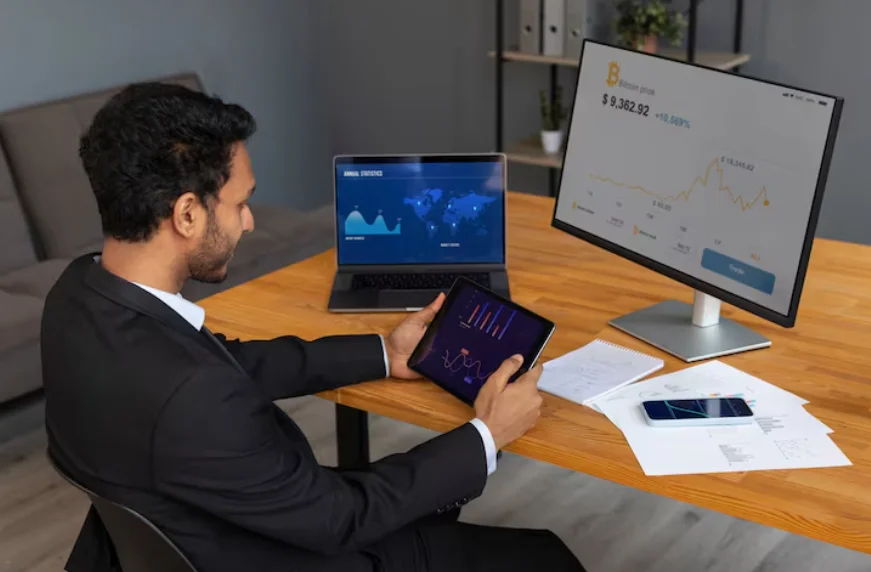Has this ever happened to you that you knew what you wanted to do – but you weren’t sure of how to get there? So, what’s the way to figure that out? The answer is creating a proper plan. If you want your projects to succeed, you first need to understand the resources you currently have, plan how you would use them, and keep in mind your limitations or constraints. This is what resource planning in project management entails. Project managers are tasked with efficiently managing resources, which include both human and non-human, ensuring the success of projects. There are many benefits of resource planning for project managers. For example, enhanced efficiency, reduced costs, and fewer or no bottlenecks. Therefore, the best approach for resource planning in project management is creating a comprehensive plan while keeping a buffer to manage any surprises that can derail your project.
Resource Planning: Definition
Resource planning implies following an organized approach for thoughtful resource utilization for a specific project or a set of projects. At its core, resource planning involves planning how to distribute work among the team members considering various factors, and then allocating various tasks to them. Without resource planning in project management, it’s not viable for any business to manage its utilization percentages, track resource performance or capacity, or keep project budgets on track.
Importance of Resource Planning
Efficient resource planning is vital for any project. Read on to find the top reasons.
- Enhancing efficiency and decreasing the idle or unproductive time, which leads to underutilized resources
- Optimal utilization of available resources to maximize your project outcomes
- Managing various project tasks with a structured and strategic approach
- Awareness about your resource availability for all pipeline projects
- Encouraging job satisfaction and employee retention
- Improving your client relationships and rapport with other stakeholders.
- Avoiding resource burnout and overallocation
- Managing deadlines well and meeting all schedules efficiently
- Accurate identification and classification of resources
- Reduced wastage of resources
- Important insights on the need for new hiring or team shuffling to bring in better productivity
Types of Resources Needed in a Project
You would need to plan and manage various types of resources to execute any project. This ensures successful management and completion of the project with the promise of better productivity and higher profitability. Let’s consider some examples:
- Human resources: The employees or people involved in the project, which include the team members, vendors, stakeholders, etc.
- Material resources: The physical equipment, tools, and materials needed for the project.
- Financial resources: The budget or finances required and allocated for the project.
- Time resources: The duration of the entire project, or the start and end dates, timelines, and various milestones.
- Information resources: The data and information that is needed for the project, including reports, documentation, and analytics.
- Technological resources: The hardware and software or systems needed for the project, including computers, software applications, servers, and communication tools.
Managing all these types of resources seamlessly is important to ensure your project gets completed on time, stays within budget, and is delivered with the desired quality.
Steps of Resource Planning
The resource planning process typically involves the following steps:
- Drafting a Project Plan: The first step in resource planning in project management involves creating a detailed outline for a project plan mentioning how it will be executed. At this preliminary stage, you also need to determine the type of resources you need including their skill set and competencies. After finding the best and most suitable resources for your project, you need to check their availability and determine the project tasks and how long each task would take to complete.
- Plan and Organize Resource Planning Meetings: Depending on your organization’s size, contact and check with project managers to find out about the resource requirements they have. Doing this enables you to prevent any resource conflicts and establish priorities for the organization. For example, you could avoid a scenario where different project managers wish to use the same resources on the same timeline.
- Resource Identification and Scheduling: The first step to finding the best resources is determining the resources you require for a successful project. This includes team members, stakeholders, all materials including equipment, machinery, and tools, supplies, facilities, and budget.
- Precise Resource Estimation: This is the amount or quantity of various types of resources you would need for your project. For instance, how many junior, mid, and senior level skill sets with certain competencies, including the number of hours or effort needed for all types. This also includes how many units or amounts of material or tools are needed and what are the constraints for each.
- Roles and Responsibilities: This includes the roles and responsibilities of various people in the project. In this case, a RACI matrix assists in defining each aspect. Embedding this matrix in your resource plan is a good idea for a quick visual snapshot.
- Manage Resources: After deciding the team, assign various resources to appropriate roles, and assign responsibilities to them. Ensure their schedules are manageable. It is advisable to bake in some buffer in the schedule to consider any contingencies.
- Analysis and Control: This stage includes having backup plans in place to determine how you will manage any potential challenges so that your project doesn’t derail if a resource is unavailable.
- Communication Guidelines or Processes: Establishing processes and guidelines for communicating updates related to various resources to your stakeholders is important. This enables reducing or removing misunderstandings and mix-ups during your project lifecycle.
- Monitoring and Control Measures: Various processes or tools are used to monitor and manage your resources through the project. Tracking the progress, utilization, and performance of your resources is important to map your project KPIs.
eResource Scheduler – Your Best Bet for Resource Planning in Project Management
If you are aiming to streamline your project execution and delivery, resource planning in project management is imperative. Try the best-in-class and top-rated resource management system, eResource Scheduler. With a feature-rich and easy-to-understand interface, eResource Scheduler comes at a competitive price. This resource planning tool eases your multi project planning, resource management, and enables drafting accurate and balanced schedules. What’s more? It also enhances collaboration and communication between resources and different teams. The tool’s key features include scalability, drag and drop scheduling, high configurability, visual and detailed reports, efficient scheduling and management, and automated alerts. With this resource planning and time-tracking tool, you can create efficient resource plans, design dashboards, track resource utilization, and profitability. So, sign up now and take a free trial to try this tool with robust architecture and improve resource utilization by 18 to 30%.

How Traffic Management Businesses Are Improving Field Accountability

How to Plan a Last-Minute Holiday Trip with Instant Loan Support

Turning Cash Flow Into Confidence

Pay Stub Templates You Can Use — Free and Easy to Customize

Holistic Advice for Someone Looking to Reduce Stress

How Traffic Management Businesses Are Improving Field Accountability

How to Plan a Last-Minute Holiday Trip with Instant Loan Support

Turning Cash Flow Into Confidence









